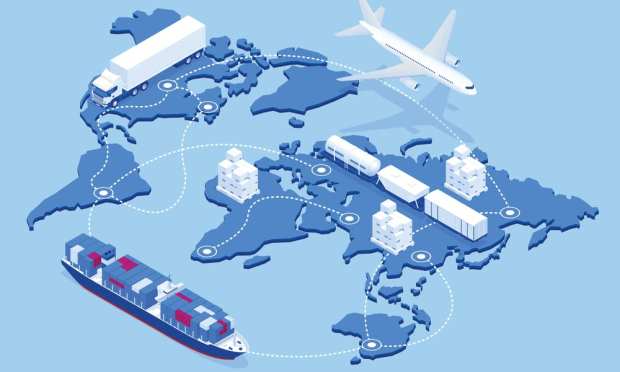The Double-Edged Sword Of Supply Chain Data

For organizations with a global supply chain, the coronavirus pandemic revealed a difficult truth.
“The pandemic is not only a major public health crisis, but it’s also an immense financial shock,” explained Jennifer Bisceglie, CEO at supply chain risk management platform Interos.
As she recently told PYMNTS, supply chain risk has skyrocketed, with immense pressure weighing down on corporate cash flows and balance sheets. Making this disruption even worse is the inevitability that any negative consequence from the pandemic on one business is likely to reverberate throughout its supplier base.
This climate creates a difficult conundrum for businesses: collecting and sharing data within the enterprise, as well as between business partners throughout the supply chain, is essential to mitigating risk. Yet the pandemic has also elevated cybersecurity threats, making data sharing a delicate process — and a potentially harmful one if not done securely.
Mitigating Financial Risk
As Bisceglie explained, market volatility has exacerbated risk exposure on multiple fronts.
“The pandemic has galvanized a new era of supply chain risk monitoring,” she said. “Now, business leaders have come to terms with the fact that understanding every kind of risk across their supply chain — whether it’s financial, operations, governance, geographic or cyber risk — is absolutely critical.”
While all of these categories can negatively impact the bottom line, today, mitigating financial risk remains a key focus for businesses, particularly as the instance of delayed and late payments grows more worrisome. Canceled orders and rising insolvencies continue to drive the late B2B payments risk further.
That’s because if one vendor is paid late, it’s likely that company will struggle to pay its own suppliers on time. Organizations must obtain visibility into the financial health of their business partners so as to anticipate and break the cycle of cash flow bottlenecks.
According to Bisceglie, understanding liquidity, solvency and exposure are the three critical areas of financial risk organizations must assess.
“Knowing who has cash-on-hand, the ability to pay back existing debt, and level of exposure to political, geographic, and industry-specific risk elements can help businesses anticipate which of their partners can be relied upon — and where they need to start looking for alternatives,” she said.
Protecting Data
Mitigating supply chain risk — financial and otherwise — involves sophisticated data aggregation and analytics capabilities. It’s important for organizations to analyze their supply chain risk data and be able to share it throughout the enterprise, noted Bisceglie, in order for various teams to make the most informed decisions and ensure everyone is on the same page.
It’s also imperative that organizations both collect and share data throughout their supply chain partners as well in order to assess risks, like the possibility that a vendor will be paying late or fall into insolvency.
Yet this data-driven risk management strategy can be a double-edged sword. With the pandemic elevating cybersecurity risks for organizations, the heightened data collection and sharing activity — intended to mitigate risk — may actually expose organizations to other types of threats, with dire consequences throughout supply chains.
“It’s important to note that supply chain risk data, when collected, must be closely protected while a business evaluates the findings and next steps,” said Bisceglie. “One of the biggest challenges that companies face in collecting and sharing supply chain risk data is the danger of that information being compromised.”
Organizations must be proactive about assessing their cyber risk exposures as a result, and prioritize data security as they move forward with their supply chain strategies. This is a “massive undertaking,” however Bisceglie noted the opportunity for artificial intelligence to enhance the value of data, and the role that third-party partners can play in helping to protect that information.
While data can create new risks for organizations, an even bigger risk would be to ignore threats – financial and otherwise — by not analyzing and sharing data. Failing to implement a robust supply chain risk management strategy through data analytics can jeopardize the future of an enterprise.
“Organizational leaders are addressing a dangerous blindspot in supply chain risk, and visibility is the first step to understanding exactly where risks are located and how to remove them to avoid future disruption,” added Bisceglie. “In the year ahead, the demand for visibility and continuous monitoring that we’re currently seeing won’t be a trend — it will be widely understood as a business best-practice.”